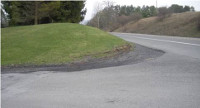Unsignalized Intersection Improvement Guide (UIIG)
by Airton Kohls (Source:ITE)
I was looking for information on unsignalized intersections and came across this website hosted by the Institute of Transportation Engineers (ITE) under the sponsorship of the Federal Highway Administration (FHWA). It is a great place to start if your agency is looking for help to improve the safety, mobility, and accessibility at unsignalized intersections. Please check the Toolkit section. There are 75 different treatments that can be explored by agencies to improve conditions on unsignalized intersections. Here is the website: http://www.ite.org/uiig/treatmentlist.asp and here is a little background on the reasons for ITE to develop the website.

From 2010 to 2012, more than 70 percent of all intersection-related fatal crashes nationwide involved unsignalized intersections. These accounted for approximately one of every six fatal crashes on U.S. roadways. As such, and because the vast majority of intersections in the U.S. are unsignalized, it is vital that state and local transportation agencies consider how their design and management practices can better address safety performance, operations, and access for all users at these types of intersections.
The majority of unsignalized intersections are owned and operated by local agencies. Many smaller jurisdictions do not have professional traffic engineers on staff but must frequently make decisions on safety treatments and enhancements at unsignalized intersections. These agencies need practical guidance to assist them in arriving at and justifying these decisions to policymakers and the public.

The UIIG has been developed to address this need. It is prepared to primarily aid local agency practitioners in selecting design, operational, maintenance, enforcement, and other types of treatments to improve the safety, mobility, and accessibility of all users at unsignalized intersections. It is designed under the assumption that an unsignalized intersection (or group of unsignalized intersections) has been identified as having a problem related to traffic safety, operations, or access. The UIIG assists the user in confirming there is indeed a problem and identifying the type and potential cause of the problem, and then offers possible treatments-also identified as countermeasures or strategies-that address the problem. The selection of the desirable treatment for implementation is to be determined by the agency with input from and review by the affected stakeholders within the community.

The UIIG's primary audience is the agency (or individual) responsible for the roads within a local government jurisdiction, especially those agencies lacking staff with a formal education in highway and traffic engineering principles. However, even trained staff from state and local highway agencies may find this Guide helpful as they address various problems at their unsignalized intersections.
Back-Contents-Forward